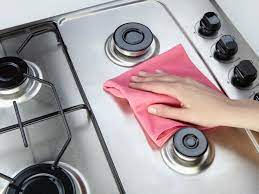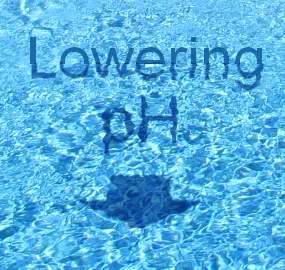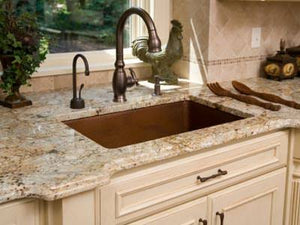Carpet Fiber-which one for your lifestyle
What type of carpet fiber is best suited for your lifestyle?
The various types of carpeting fibers used will for the most part determine a carpet or rug's characteristics.
A fiber can be categorized as either:
1.A natural fiber, which is produced from living plants or animals:- those produced from plants are known as cellulosic fibers.
- generally not used in the face yarns (the part of the carpet you walk on) of manufactured carpet but rather as the backing material or in the construction of a woven carpet or rug.
- they stain easily, are very absorbent, are subject to cellulosic browning, shrinkage and mildew.
- cotton, jute, rayon, sisal, sea grass, and cordage (paper) are all types of cellulosic fibers.
- those produced by animals or insects are known as protein fibers. This category of fibers include wool and silk.
- A wool fiber has the advantage of being flame resistant, resistant to mild acids, is strong, resilient, and can be easily dyed. This fiber can be damaged by highly alkaline cleaning products. Although wool repels dry soil well, it can be easily stained.
- Silk is naturally non-flammable and is a strong fiber. This fiber can be damaged by highly alkaline cleaning products and is very absorbent.
- The nylon carpet fiber accounts for over 50% of all manufactured carpeting sold.
- Nylon is a long wearing fiber that cleans well, is soil and stain resistant, moth and mildew proof, easily dyed, and economical.
- Nylon may discolor from sunlight or oxidizing pollutants, and can be easily stained by foods, beverages and other substances containing dyes. High alkaline cleaning agents (over 10.0 on the pH scale) can affect the stain resistance of nylon carpet.
- The polypropylene or olefin carpet fiber is gaining popularity in manufactured carpeting.
- Olefin offers excellent stain resistance, cleans well, is mildew and moth proof, non-allergenic, abrasion resistant (long wearing), and is economical.
- Polypropylene is not resistant to oil based soil. Another disadvantage is its poor resilience (remains matted or crushed with foot traffic).
- Polyester is a lesser used carpet fiber. It looks and feels like nylon but offers some advantages over nylon.
- Polyester offers good color retention, is soil and stain resistant (non-absorbent to water based stains), strong (abrasion resistant), moth proof and mildew resistant, non-allergenic and can be recycled.
- Polyester does not offer good resiliency and can absorb oil based soil.
- The acrylic fiber is predominately used for blending with other fiber types rather than alone in manufactured carpeting. The appeal is it's wool-like texture and appearance.
- Acrylic is a strong fiber that wears well, resists staining, is mold and mildew proof, non-allergenic, and retains its color well.
How can you identify the carpet fiber content of your carpeting (or upholstery)?
Burn testing is a good method for field testing but its accuracy may be distorted with the presence of dyes or yarns blended with more than one carpet fiber.
Chemical testing is more time consuming but is more accurate than burn testing. It is best to perform this test in a well ventilated area with a sink or container to dispose of the used chemical solutions.
When either burn or chemical testing, only a few yarns of the carpet in question are needed. Obtain a sample from any extra carpet left over from the installation first. If no carpet remnant is available, then seek to cut a sample tuft (3/4 to 1 inch long) from a closet or an inconspicuous area with a good pair of scissors.
To burn test:
Hold the burn test fiber sample with a paper clip or pair of tweezers (not your fingers) over an ash tray or sink to avoid any damage or fire. Holding the sample parallel to the floor, apply the flame of a disposable butane lighter to the fiber end until lit, pull flame away, then observe the FLAME, the ODOR and the ASH.
To chemical test:
A specific chemical solution is applied to the sample fiber to determine if that chemical will dissolve the suspected fiber type. Strong acids or alkalines can also have an affect on the fiber type.
The carpet fiber type and its reaction to either burn or chemical testing is given below:
Wool & Silk
- the flame is orange, sputters out and no smoke. The odor is burning hair. The ash is black and crumbles to a coarse powder.
- Dissolves in strong alkalines (chlorine bleach or lye). Not dissolved by strong acids.
Rayon
- the flame is orange and burns rapidly. The odor is burning paper. There is no ash or bead.
- Dissolves in strong acids (sulfuric acid). Not dissolved in strong alkalines.
Cotton/Jute/Sisal
- the flame is orange, burns evenly with no smoke. The odor is burning paper. The ash is a glowing ember whcih crumbles to a fine powder.
- Dissolves in strong acids. Safer with mild alkalines. Stronger when wet.
Nylon
- the flame has a blue base and orange tip, burns evenly and no smoke. The odor is similar to celery or plastic. The ash is a round hard black bead.
- Dissolves in formic acid.
Olefin
- the flame has a blue base and orange tip, burns evenly but rapidly and no smoke. The odor is similar to asphalt or paraffin wax. The ash is a gray/tan to brown hard bead.
- Dissolves in Dehydronapthalene (naptha). This fiber floats in water.
Polyester
- The flame is orange and sputters with sooty black smoke. The odor is sweet and fruity. The ash is a round shiny black bead.
- Dissolves in hot meta-cresol or boiling Dimethylformamide.
Acrylic
- The flame is white orange, sputters, burns fast with black smoke. The odor is similar to burnt meat. The ash is a black hard crust that can be crushed.
- Dissolves in warm Dimethylformamide.
Once the type of fiber is properly identified, a proper decision for cleaning can be confidently made.
- Tags: advice cleaning cleaning tips science
- Matthew Smith



Comments 0